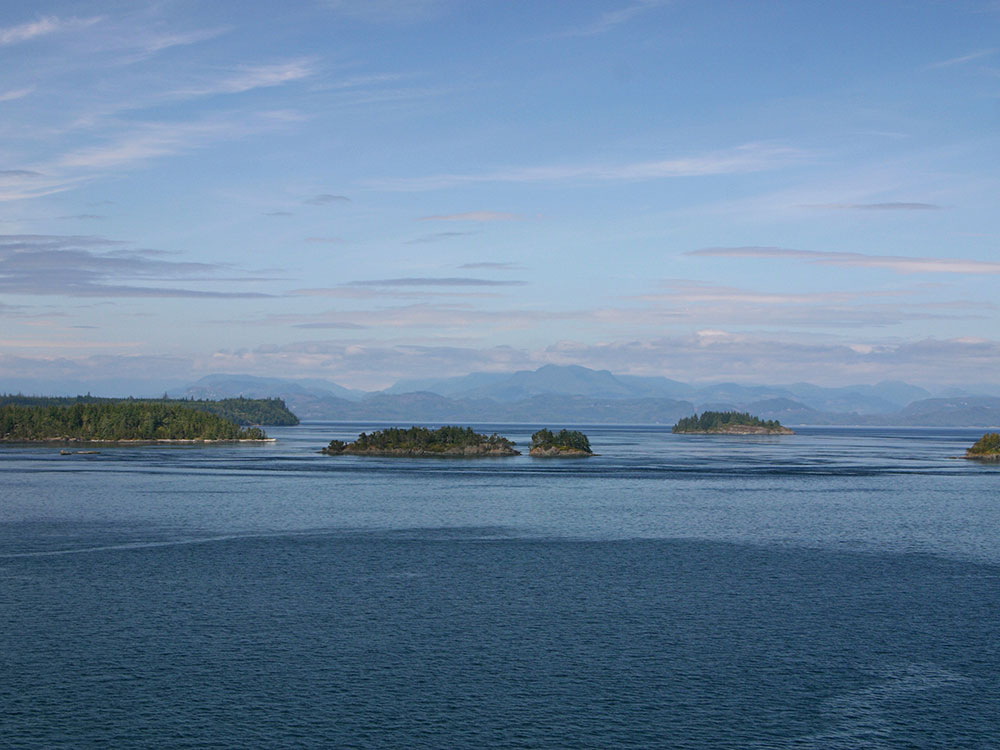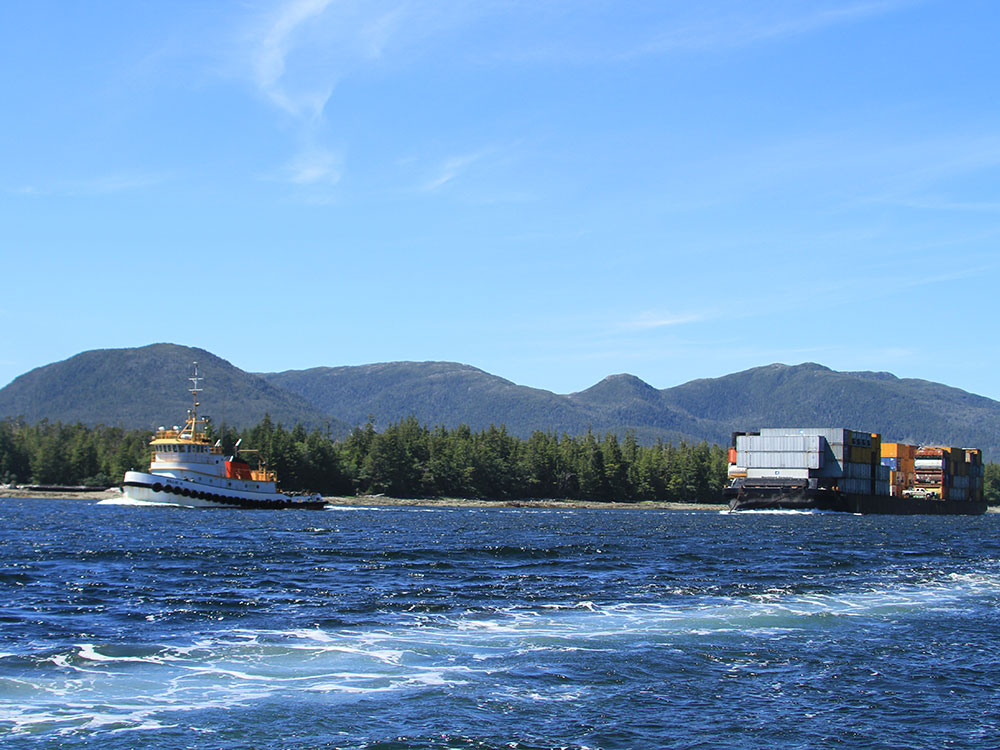General Information
How to Get There
Overview
The Inside Passage is a coastal route for ships and boats along a network of passages which weave through the islands on the Pacific Northwest coast of the North American Fjordland. The route extends from southeastern Alaska, through western British Columbia in Canada, to northwestern Washington state. The Inside Passage is heavily travelled by cruise ships, freighters, tugs with tows, fishing craft, pleasure craft, and ships of the Alaska Marine Highway, BC Ferries, and Washington State Ferries systems. Coast Guard vessels of both Canada and the United States patrol and transit in the Passage.
The term "Inside Passage" is also often used to refer to the ocean and islands around the passage itself.
The southernmost point of the Inside Passage is Olympia, Washington, which is also the southernmost point of Puget Sound. Moving north, the passage continues into the waters of the greater Salish Sea. It then passes through the Strait of Georgia and Johnstone Strait, between northeastern Vancouver Island and the coast of mainland British Columbia. From there it continues further northwest into the Alaska Panhandle. The northernmost points of the Passage are Haines and Skagway at the head of the Lynn Canal.
During the Klondike Gold Rush the passage was one of the sea routes from Seattle and California, carrying American prospectors northward.
Washington's portion of the route is made up almost entirely of the waterways of Puget Sound. Starting from the southernmost point of Budd Inlet, the waterway turns toward the northeast and broadens as it becomes the Nisqually Reach of Puget Sound. The waterway then continues northeast, through the Tacoma Narrows, northward toward the San Juan Islands just southeast of the border with Canada.
British Columbia's portion of the route includes the narrow, protected Strait of Georgia between Vancouver Island and the B.C. mainland, the Johnstone Strait and Discovery Passage between Vancouver Island and the mainland, as well as a short stretch along the wider and more exposed Hecate Strait near Haida Gwaii (formerly the Queen Charlotte Islands). From Fitz Hugh Sound northwards, the route is sheltered from Pacific winds and waves by the various large islands in the area such as Princess Royal Island and Pitt Island. This section includes a series of channels and straits, from south to north: Fisher Channel, Lama Passage, Seaforth Channel, Milbanke Sound, Finlayson Channel, Sarah Passage, Tolmie Channel, Princess Royal Channel (includes Graham Reach and Fraser Reach), McKay Reach, Wright Sound, Grenville Channel, Arthur Passage, and Chatham Sound.
Alaska's portion of the Inside Passage extends 500 miles (800 km) from north to south and 100 miles (160 km) from east to west. The area encompasses 1,000 islands and thousands of coves and bays. While the Alexander Archipelago in Alaska provides some protection from the Pacific Ocean weather, much of the area experiences strong semi-diurnal tides. Lynn Canal is the northernmost waterway of the Inside Passage.
The Inside Passage is a popular tourism destination. The coastal mountain ranges and islands offer wildlife viewing and opportunities for boating, fishing, kayaking, camping and hiking. Wildlife viewing in the region ranges from birding to whale watching and bear viewing. Designated bear viewing is available at Anan Creek near Wrangell and at Pack Creek Bear Sanctuary on Admiralty Island near Juneau.
The most popular way to explore the Inside Passage during summer is by cruise ship. Over 2 million people take cruises each year in this region. Because there are few restrictions on ship size, all of the large main line cruise ships offer Inside Passage itineraries. Some include Norwegian, Disney, Princess, Celebrity Cunard, etc. Most of these cruises offer round-trips from either Vancouver or Seattle.
There are also a handful of expedition cruises that explore the Inside Passage. These ships tend to be smaller than main line cruises and focus more on wildlife watching.
This article uses material from the Wikipedia article "Inside Passage", which is released under the Creative Commons Attribution-Share-Alike License 3.0


